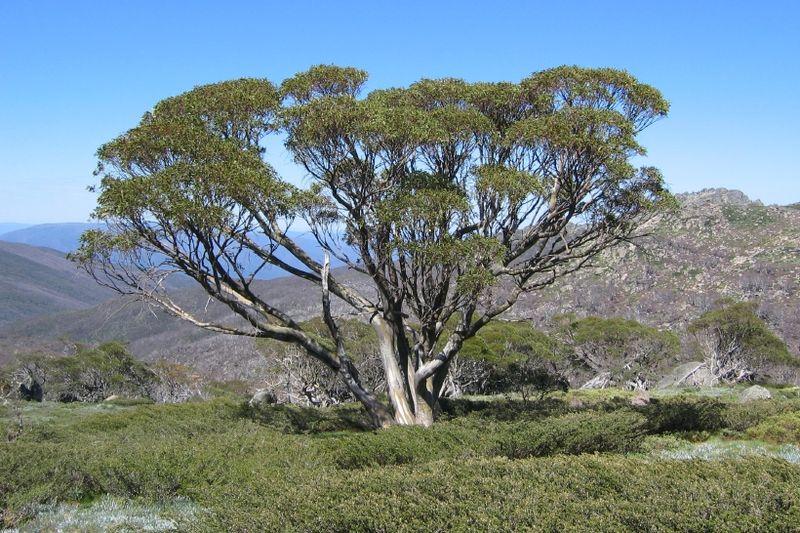Snow gum
(Eucalyptus pauciflora pauciflora)

Description
Eucalyptus pauciflora pauciflora, also known as the Snow Gum, is a small to medium-sized tree that is native to the alpine regions of eastern Australia. It is one of several subspecies of Eucalyptus pauciflora, which is a species of eucalyptus tree that is known for its tolerance of extreme weather conditions, particularly cold temperatures. Physical Description The Snow Gum typically grows to a height of 5 to 15 meters, although specimens as tall as 30 meters have been recorded. It has a dense, spreading crown and a distinctive, rough bark that is typically white or gray in color. The leaves of the Snow Gum are narrow, lance-shaped, and bluish-green in color. The tree produces small, white or cream-colored flowers in clusters of up to 20, which appear in late spring or early summer. Distribution and Habitat Eucalyptus pauciflora pauciflora is native to the alpine regions of eastern Australia, where it grows in subalpine woodlands and shrublands at elevations of 1,000 to 2,000 meters. Its range extends from southern New South Wales to eastern Victoria, and it is particularly common in the Kosciuszko National Park and the Australian Alps. Ecology and Adaptations The Snow Gum is adapted to survive in the harsh alpine environment, where temperatures can drop to below freezing and snowfall can be heavy. One of its key adaptations is its ability to regenerate from a basal lignotuber, which allows the tree to resprout after being damaged by fire or frost. The Snow Gum also has a deep root system that allows it to access water and nutrients from the subsoil, which is important in the nutrient-poor alpine soils. The Snow Gum is also able to photosynthesize at low temperatures, which is a rare trait among eucalyptus species. This adaptation allows the tree to continue growing during the cool alpine summers, when other eucalyptus trees are dormant. Cultivation and Uses Eucalyptus pauciflora pauciflora is a popular ornamental tree in gardens and parks, particularly in cold-climate regions where other eucalyptus species may not survive. The tree is also used in erosion control and land rehabilitation projects due to its ability to grow in poor soils and harsh environments. The Snow Gum is also an important species for the timber industry, although its use is limited due to its small size and the fact that it grows in relatively inaccessible alpine regions. The timber is used for flooring, furniture, and veneers, and has a distinctive, pale color and fine grain. In addition, the Snow Gum has medicinal properties and is used in traditional Aboriginal medicine for the treatment of respiratory and skin ailments. The tree also has a high oil content, and its essential oil is used in aromatherapy and as an ingredient in cleaning and disinfecting products. Conservation Status Eucalyptus pauciflora pauciflora is not currently listed as a threatened species, although the ongoing impacts of climate change, land use change, and invasive species could potentially threaten its survival in the future. Conservation efforts are focused on protecting the alpine habitat of the Snow Gum, as well as monitoring and managing threats such as fire and grazing by introduced animals. Conclusion Eucalyptus pauciflora pauciflora, or the Snow Gum, is a small to medium-sized tree that is adapted to survive in the harsh alpine environments of eastern Australia. The tree has a number of adaptations that allow it to survive in extreme weather conditions.
Taxonomic tree:







